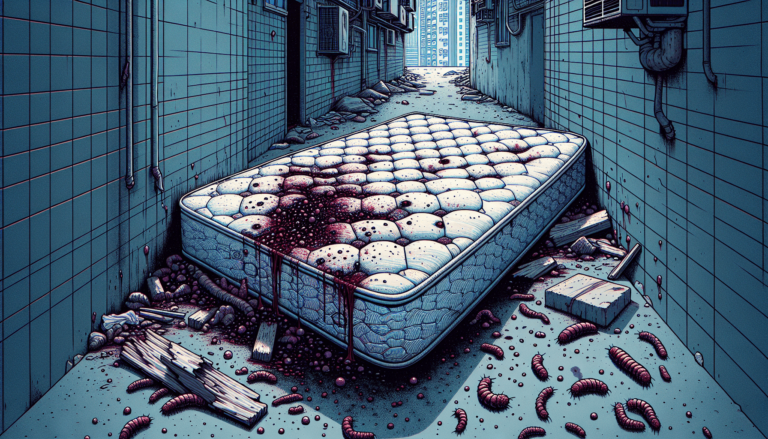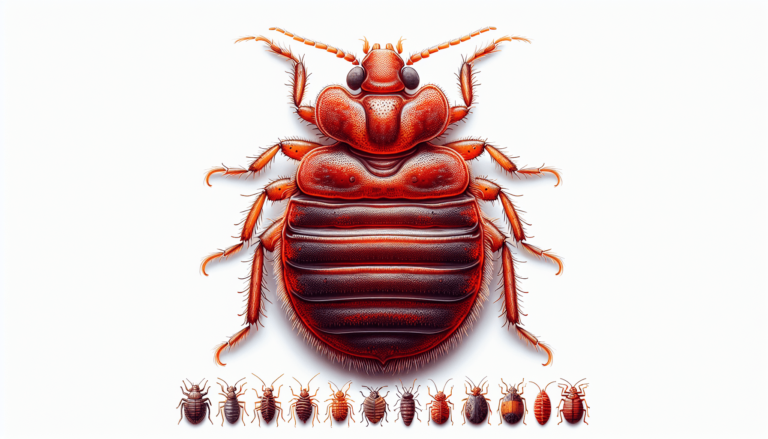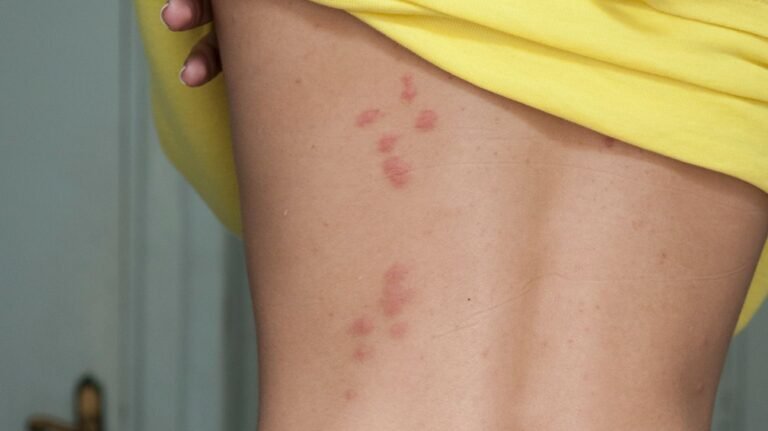What to Do When You Encounter Bed Bugs
If you ever find yourself facing the unfortunate situation of encountering bed bugs, it is crucial to know what steps to take to address the issue effectively. In this comprehensive article, we will explore the necessary actions to minimize the impact of bed bugs and regain control over your living space. From identifying the Signs of bed bug infestation to implementing preventive measures, this article will equip you with invaluable knowledge to tackle this common problem. By following our expert advice and incorporating real-life examples, you will be empowered to take swift action, ensuring a peaceful and bug-free environment.
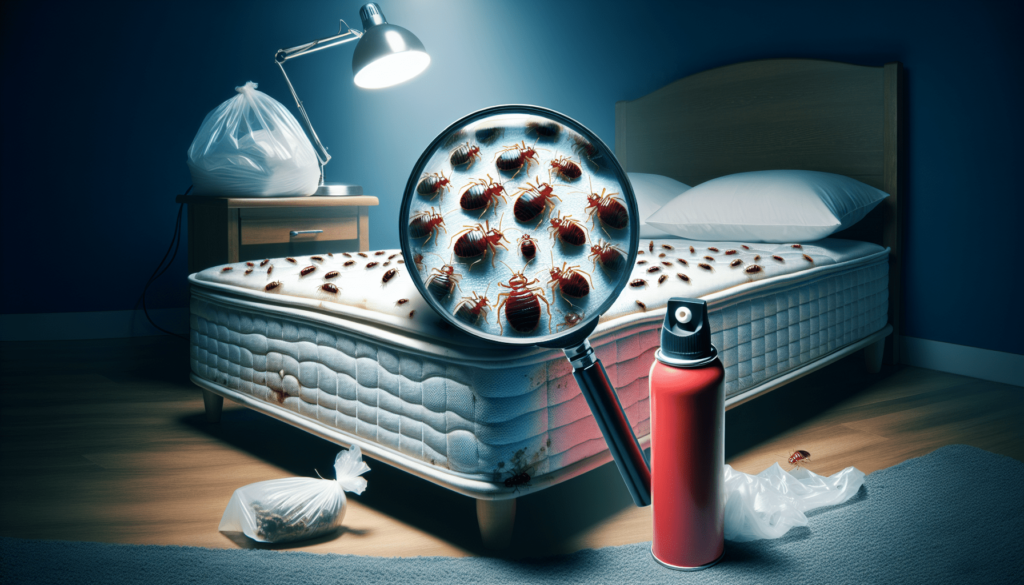
Identifying Bed Bugs
Physical characteristics of bed bugs
To effectively identify bed bugs, it is important to understand their physical characteristics. Bed bugs are small, wingless insects that are typically reddish-brown in color. They have flat, oval-shaped bodies and are about the size of an apple seed. Adult bed bugs are around 5-7 millimeters in length, while nymphs (immature bed bugs) are smaller and lighter in color.
Typical hiding spots
Bed bugs are most commonly found in areas where humans spend a lot of time, such as beds, mattresses, and upholstered furniture. They hide in cracks and crevices during the day and come out at night to feed on human blood. Some typical hiding spots include mattress seams, box springs, headboards, and bed frames. They can also be found in nearby furniture, electrical outlets, and even behind wallpaper.
Signs of bed bug infestation
Besides physically finding bed bugs, there are several signs that indicate a bed bug infestation. These signs include:
-
Bites: Bed bug bites often appear as red, itchy welts on the skin. However, not everyone reacts to bed bug bites, so the presence of bites alone may not be enough to confirm an infestation.
-
Bloodstains: When bed bugs feed on humans, they leave behind small bloodstains on sheets, pillowcases, and mattresses.
-
Dark spots: Bed bug excrement, also known as fecal spots, are small dark dots that can be found on bedding, furniture, and walls.
-
Shed skins: As bed bugs go through their life cycle, they shed their skin multiple times. These discarded skins can be found in areas where bed bugs hide.
-
Musty odor: Bed bugs release a distinct, sweet, musty odor that is often described as smelling like raspberries. If you notice this scent in your home, it could be a sign of a bed bug infestation.
Immediate Actions after Discovering Bed Bugs
Avoiding panic
Discovering bed bugs in your home can be distressing, but it is important to avoid panicking. Bed bugs are a common pest that can be successfully eradicated with the right approach. Panicking may lead to hasty decisions or ineffective treatments. Take a deep breath and proceed with a calm and systematic plan of action.
Starting with a thorough clean up
To effectively control an infestation, it is crucial to start with a thorough clean up of the affected area. Remove all bedding, linens, and clothing from the infested area and wash them in hot water to kill any bed bugs present. vacuum the area, paying special attention to mattress seams, crevices, and cracks. Use a stiff brush to dislodge any eggs or bed bugs.
Isolating the infested area
To prevent the bed bugs from spreading to other areas of your home, it is important to isolate the infested area. Seal off any cracks or crevices in walls, and install tight-fitting mattress and box spring encasements to trap any remaining bed bugs. Avoid moving infested items to other parts of your home, as this can lead to further infestations.
Using Home Remedies
Diatomaceous Earth
Diatomaceous Earth is a naturally occurring soft, sedimentary rock powder that can be used as an effective home remedy to kill bed bugs. It works by dehydrating the insects and causing them to die. To use diatomaceous earth, sprinkle a fine layer in areas where bed bugs are suspected to be hiding, such as cracks, crevices, and behind furniture. Leave it for a few days, then vacuum it up.
Heat Treatment
Bed bugs are highly sensitive to heat, and exposing infested items to high temperatures can effectively kill them. heat treatment can be done using a clothes dryer on a high heat setting, a steam cleaner, or by placing infested items in a hot car or sealed plastic bag and leaving them in the sun. It is important to ensure that the heat reaches all areas of infested items to effectively eliminate the bed bugs.
Cold Treatment
Similar to heat treatment, cold temperatures can also be used to kill bed bugs. Exposing infested items to freezing temperatures for several days can effectively eliminate the pests. However, it is important to note that proper preparation, such as sealing items in plastic bags, is necessary to ensure that the cold reaches all areas where bed bugs may be hiding.
Essential Oils
Certain essential oils have been found to have repellent properties against bed bugs. These include tea tree oil, lavender oil, and peppermint oil. To use essential oils as a bed bug repellent, mix a few drops with water and spray it on furniture, bedding, and other areas where bed bugs may be present. However, it is important to note that essential oils alone may not be sufficient to eliminate a full-blown infestation and should be used in conjunction with other treatment methods.
Purchasing Bed Bug Repellents
Effective over-the-counter products
If home remedies do not effectively eliminate the bed bug infestation, there are several over-the-counter products available that can help. Look for bed bug sprays or powders that contain chemicals such as pyrethroids, which are effective against bed bugs. Make sure to follow the instructions on the product label carefully and use the product as directed.
Choosing eco-friendly repellents
If you prefer to use eco-friendly options, there are also bed bug repellents available that use natural ingredients. These repellents often contain essential oils or other plant-based ingredients that are safe for humans but repel bed bugs. Look for products that are labeled as eco-friendly or organic and read the ingredient list to ensure they are derived from natural sources.
Reading and understanding product labels and instructions
When purchasing bed bug repellents, it is important to carefully read and understand the product labels and instructions. Different products may have varying application methods, safety precautions, and effectiveness against bed bugs. Following the instructions correctly will ensure that the product is used safely and effectively to control or eliminate bed bugs.
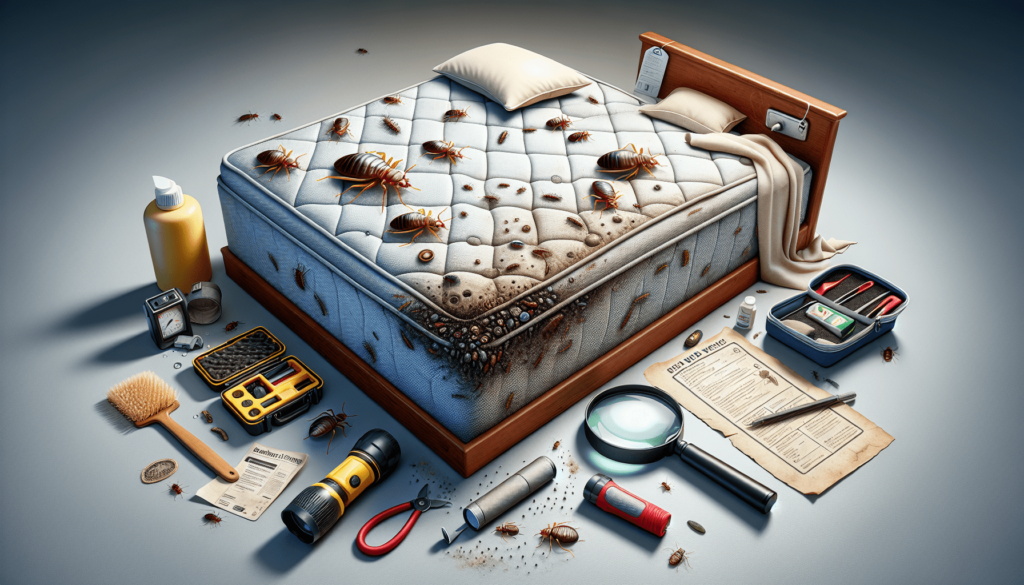
Hiring Professional Pest Control Services
When to consider professional services
While DIY methods can be effective in controlling small infestations, larger or persistent bed bug infestations may require professional pest control services. Consider hiring a professional if:
- The infestation is widespread throughout your home and difficult to control on your own.
- Previous treatment attempts have been unsuccessful.
- You are unable to locate the source of the infestation or identify all hiding spots.
- You have health issues that may be aggravated by exposure to chemicals.
Choosing a reliable pest control company
When choosing a pest control company, it is important to do thorough research to ensure you are hiring a reliable and experienced company. Look for companies that specialize in bed bug eradication and have a proven track record of successfully treating bed bug infestations. Check online reviews, ask for recommendations from trusted sources, and inquire about the company’s treatment methods and guarantees.
Understanding treatment procedures
Before hiring a professional pest control company, it is important to have a clear understanding of their treatment procedures. A reputable company should provide you with a detailed plan outlining the steps they will take to eliminate the bed bug infestation. This may include a combination of chemical treatments, heat treatments, and follow-up inspections. Make sure to ask any questions you may have and clarify any concerns before proceeding with the treatment.
Preventing Future Infestations
Regular Cleaning
One of the most effective ways to prevent future bed bug infestations is to maintain a regular cleaning routine. Vacuum your home regularly, paying special attention to areas where bed bugs are likely to hide, such as mattresses, box springs, and furniture. Wash bedding, linens, and clothing in hot water and dry them on high heat to kill any potential bed bugs.
Reducing clutter
Bed bugs thrive in environments with lots of hiding places, so it is important to reduce clutter in your home. Remove unnecessary items, such as old furniture, boxes, and piles of clutter, that can provide hiding spots for bed bugs. Keep your living space clean, organized, and free of unnecessary clutter to minimize the likelihood of a bed bug infestation.
Using bed bug prevention products
There are several bed bug prevention products available that can help protect your home from infestations. Mattress encasements and box spring encasements can provide an extra layer of protection by sealing off these areas and preventing bed bugs from accessing them. Additionally, bed bug interception devices, such as bed bug traps, can be placed under bed legs to prevent bed bugs from climbing onto your bed.
Identifying Common Sources of Bed Bugs
Travel-related sources
Travel is a common way for bed bugs to hitch a ride into your home. Bed bugs can be found in hotels, motels, and other accommodation establishments, and they can easily stow away in luggage, clothing, and other personal belongings. When traveling, inspect hotel rooms for signs of bed bugs, keep luggage off the floor, and wash and dry your clothes on high heat when you return home.
Second-hand furniture
Another common source of bed bugs is second-hand furniture. Bed bugs can hide in furniture, especially in cracks, crevices, and upholstered areas. If you are purchasing used furniture, thoroughly inspect it for signs of bed bugs before bringing it into your home. Consider treating the furniture with heat or other methods to eliminate any potential bed bug infestations.
Public spaces
Public spaces, such as libraries, theaters, and public transportation, can also be sources of bed bugs. Bed bugs can hitch a ride on clothing, bags, and other personal items, and infestations can easily spread from one location to another. When visiting public spaces, be mindful of your surroundings, avoid placing personal items on the ground, and regularly inspect and clean your belongings.
Kingdom: Animalia, Bed Bugs: Understanding the Lifecycle and Reproduction
Life stages of a bed bug
Bed bugs go through several distinct life stages before reaching adulthood. The life cycle of a bed bug consists of five stages: egg, nymph, instar, adult, and mated adult. Female bed bugs lay eggs, which hatch into nymphs. Nymphs go through several molts, or instars, before reaching adulthood. Once a bed bug becomes an adult, it is capable of reproducing and continuing the life cycle.
Reproductive habits
Bed bugs reproduce through a process called traumatic insemination. Male bed bugs use their reproductive organ, called the paramere, to pierce the abdominal wall of the female and inseminate her. This process can result in physical damage to the female bed bug and has been found to cause stress and injury. Female bed bugs are capable of laying hundreds of eggs throughout their lifetime, contributing to the rapid growth of infestations.
Understanding their survival tactics
Bed bugs are exceptionally resilient and have developed several survival tactics that contribute to their success as pests. They can survive for several months without feeding, allowing them to hide and wait for a suitable host. Bed bugs are also highly adaptable to different environments and can withstand a wide range of temperatures. Their small size and ability to hide in tiny cracks and crevices further contribute to their survival and ability to evade detection.
Myths and Misconceptions about Bed Bugs
Debunking common myths
There are many myths and misconceptions surrounding bed bugs. Some common myths include:
-
Bed bugs only infest dirty homes: Bed bugs can infest any home, regardless of cleanliness. They are attracted to human blood and are not attracted to dirt or filth.
-
Bed bugs are too small to see: While bed bugs are small, they are visible to the naked eye. Adult bed bugs are about the size of an apple seed, and nymphs are even smaller.
-
Bed bugs only infest beds: While beds are a common hiding spot for bed bugs, they can infest other areas of your home as well, such as furniture, electrical outlets, and walls.
-
Bed bugs are only found in low-income areas: Bed bugs can be found in any neighborhood, regardless of income level or cleanliness.
Understanding the real threat of bed bugs
While bed bugs are not known to transmit diseases to humans, their presence can still have significant negative impacts. Bed bug infestations can cause physical discomfort, including itching, rashes, and allergic reactions. The psychological toll of dealing with an infestation can also be significant, with many individuals experiencing anxiety, sleep disturbances, and emotional distress. Additionally, the cost of treating and eliminating a bed bug infestation can be substantial.
Health Implications of Bed Bug Bites
Physical symptoms
The primary health implication of bed bug bites is the physical symptoms they cause. Bed bug bites often appear as red, itchy welts on the skin. The bites can be irritating and uncomfortable, causing scratching and potential skin infections. While some individuals may not react to bed bug bites, others may experience more severe symptoms, including painful blistering or hives.
Potential diseases
Bed bugs have not been known to transmit diseases to humans, unlike other blood-feeding pests such as mosquitoes or ticks. However, there have been rare cases where bed bugs have been implicated in the transmission of pathogens. These cases are extremely rare, and bed bugs are not considered a significant vector for disease transmission.
Dealing with allergic reactions
Some individuals may have an allergic reaction to bed bug bites, which can result in more severe symptoms. These allergic reactions can include intense itching, swelling, and the development of hives. If you suspect that you or someone in your household is experiencing an allergic reaction to bed bug bites, seek medical attention for appropriate treatment and management.
Psychological effects
The psychological effects of dealing with a bed bug infestation can be significant. Many individuals experience anxiety, stress, and paranoia as a result of the presence of bed bugs in their home. The fear of being bitten and the discomfort associated with the infestation can lead to sleep disturbances, insomnia, and other psychological issues. It is important to address both the physical and psychological effects of a bed bug infestation for a comprehensive approach to recovery.
To properly address a bed bug infestation, it is essential to understand their physical characteristics, typical hiding spots, and signs of infestation. Immediate actions after discovering bed bugs include avoiding panic, thorough clean up, and isolating the infested area. Home remedies such as diatomaceous earth, heat treatment, cold treatment, and essential oils can be effective in eliminating bed bugs. If DIY methods fail, professional pest control services may be necessary. Preventing future infestations involves regular cleaning, reducing clutter, and using bed bug prevention products. Identifying common sources of bed bugs, understanding their lifecycle and reproduction, and dispelling myths are also important steps. Finally, being aware of the health implications of bed bug bites and addressing both physical and psychological effects is crucial for a comprehensive approach to dealing with bed bug infestations.



